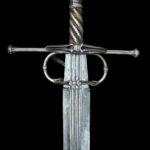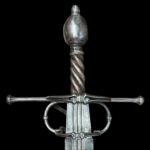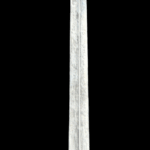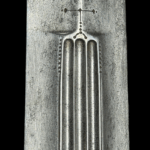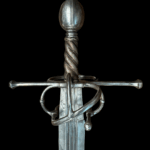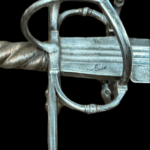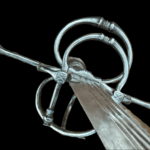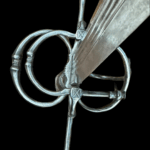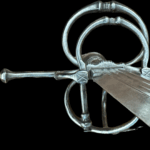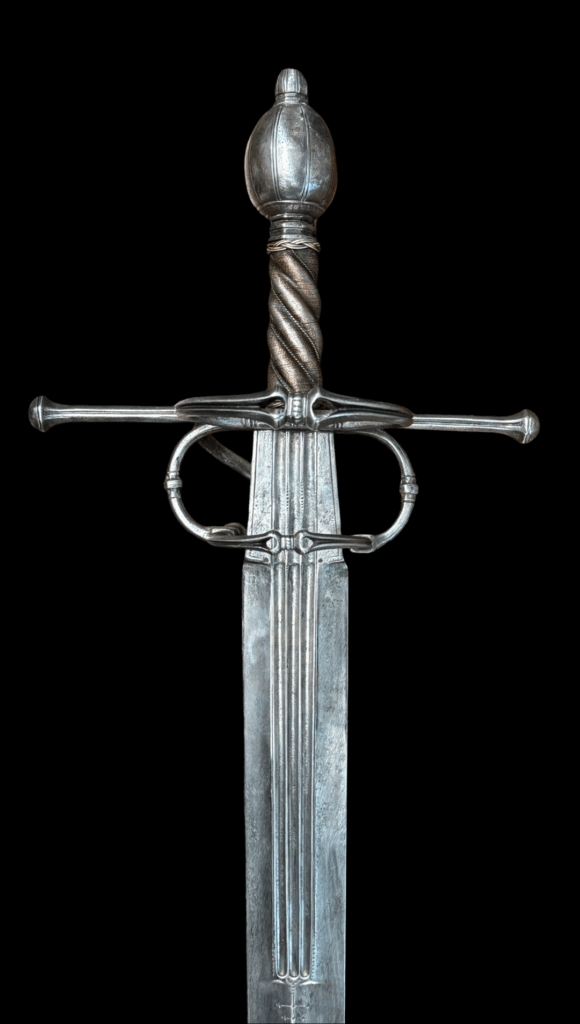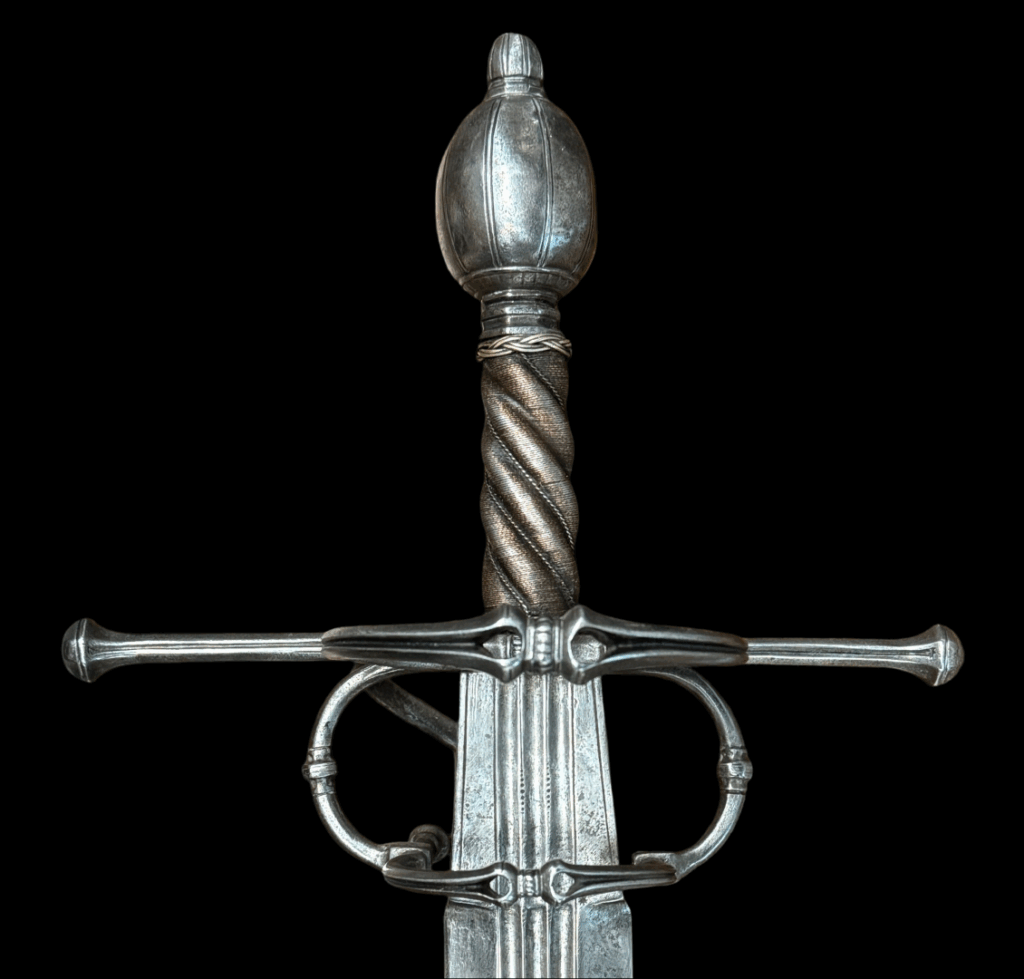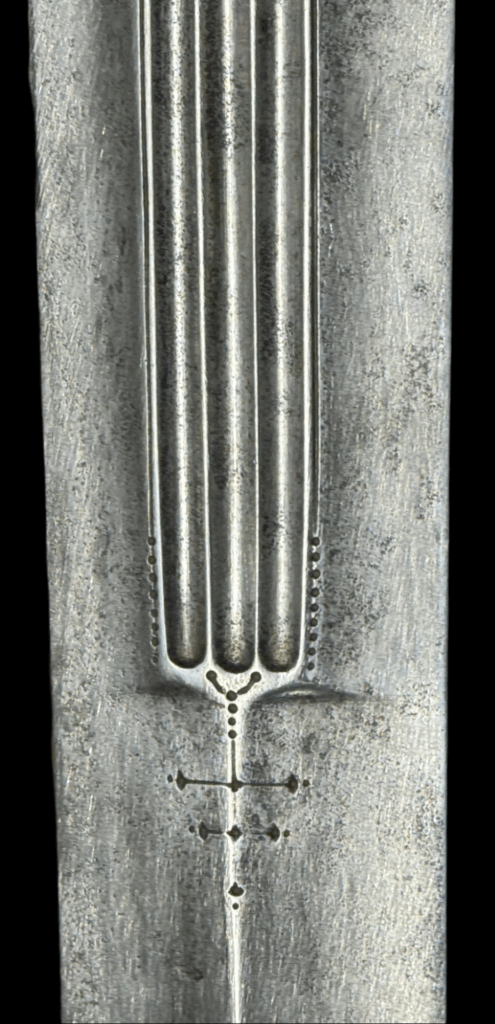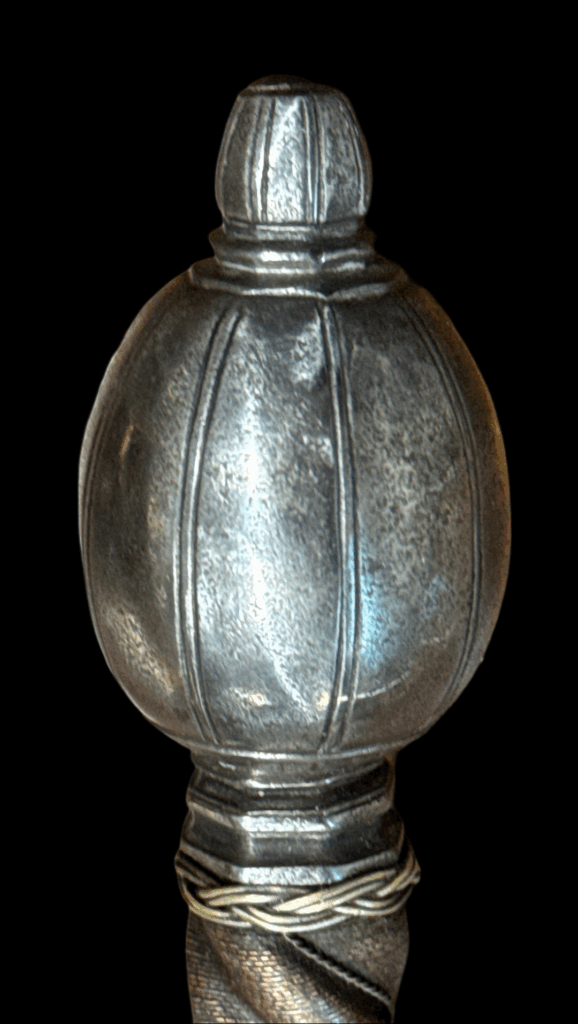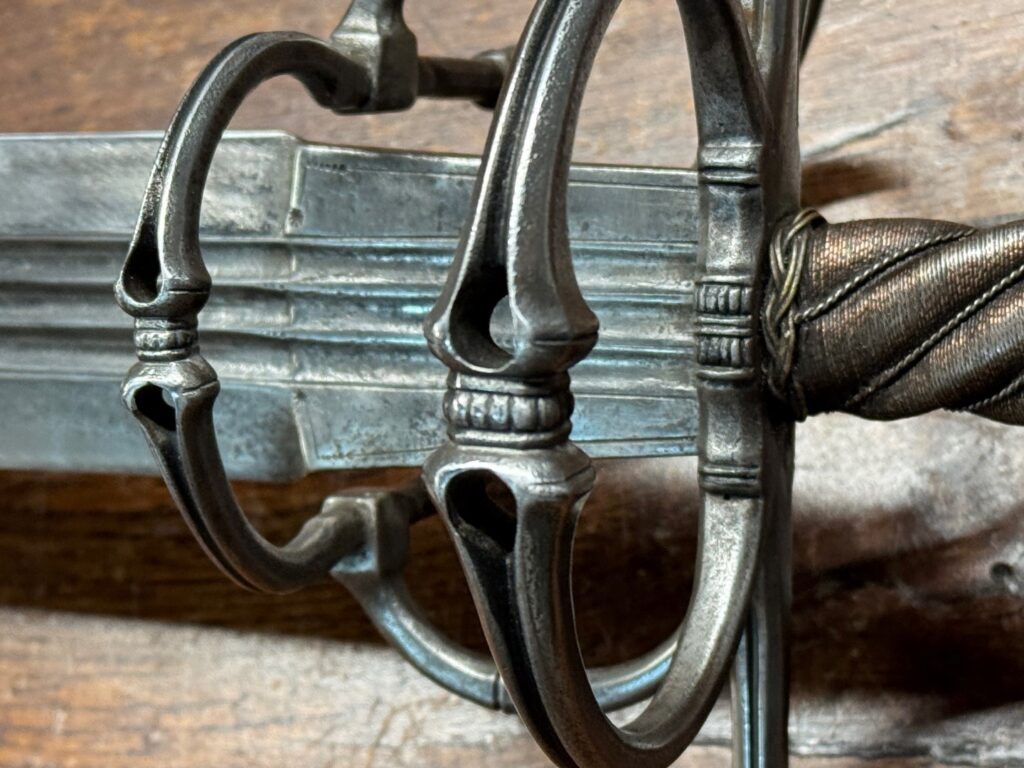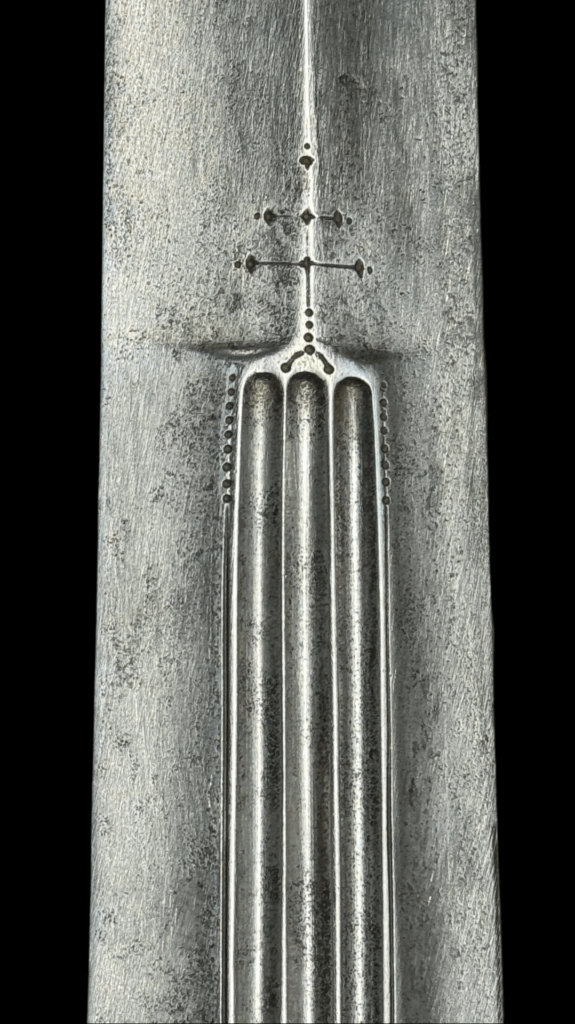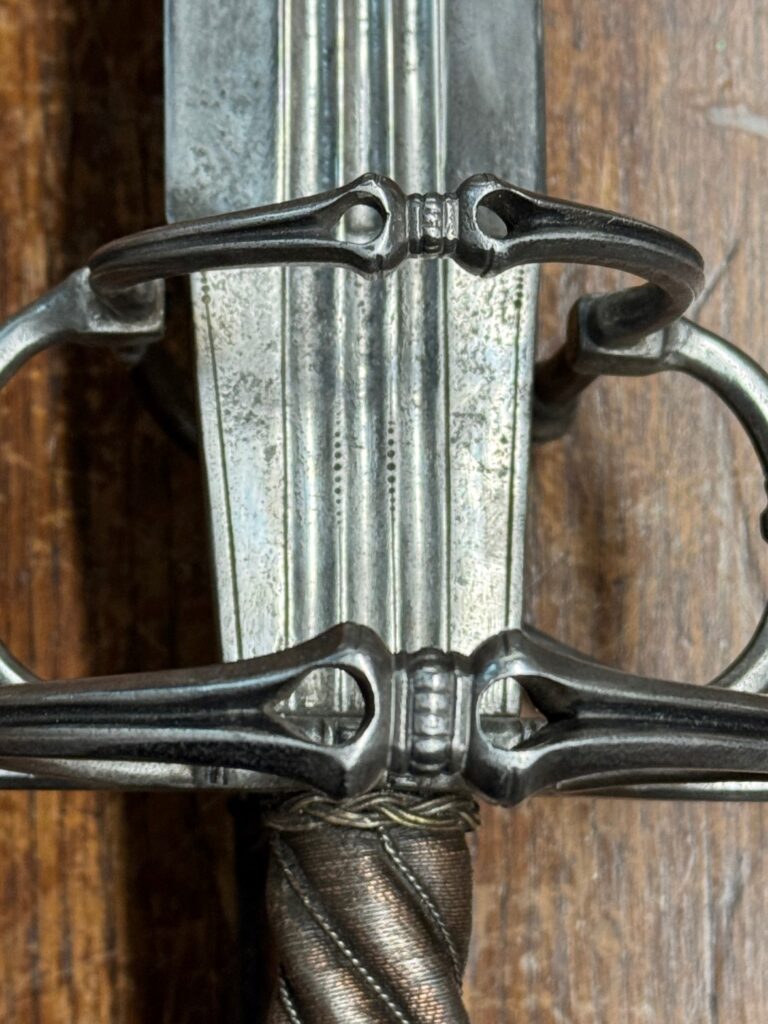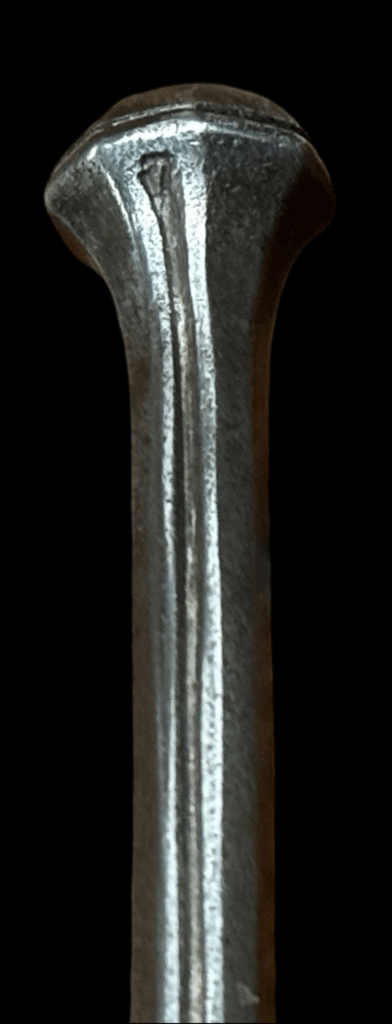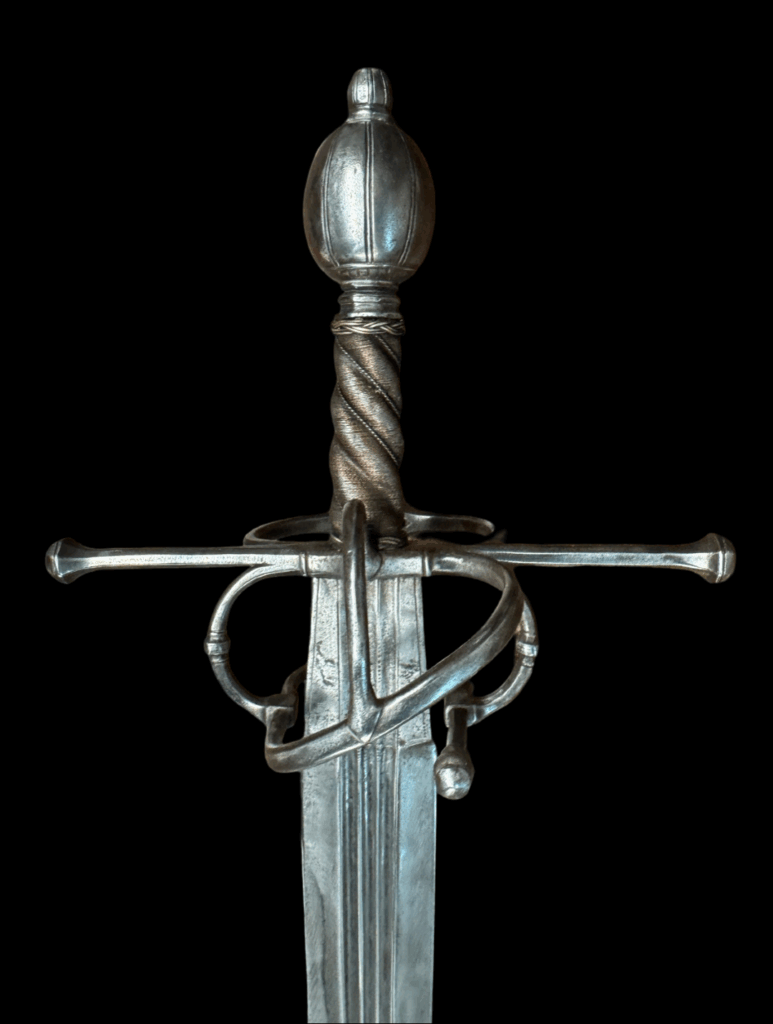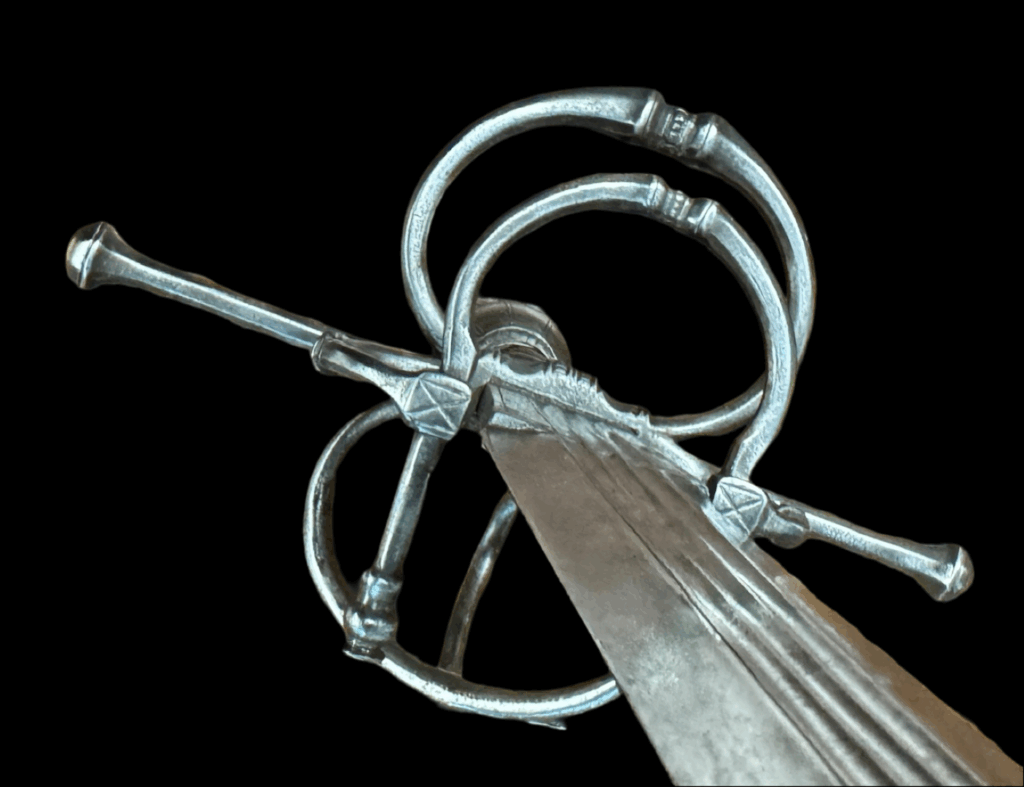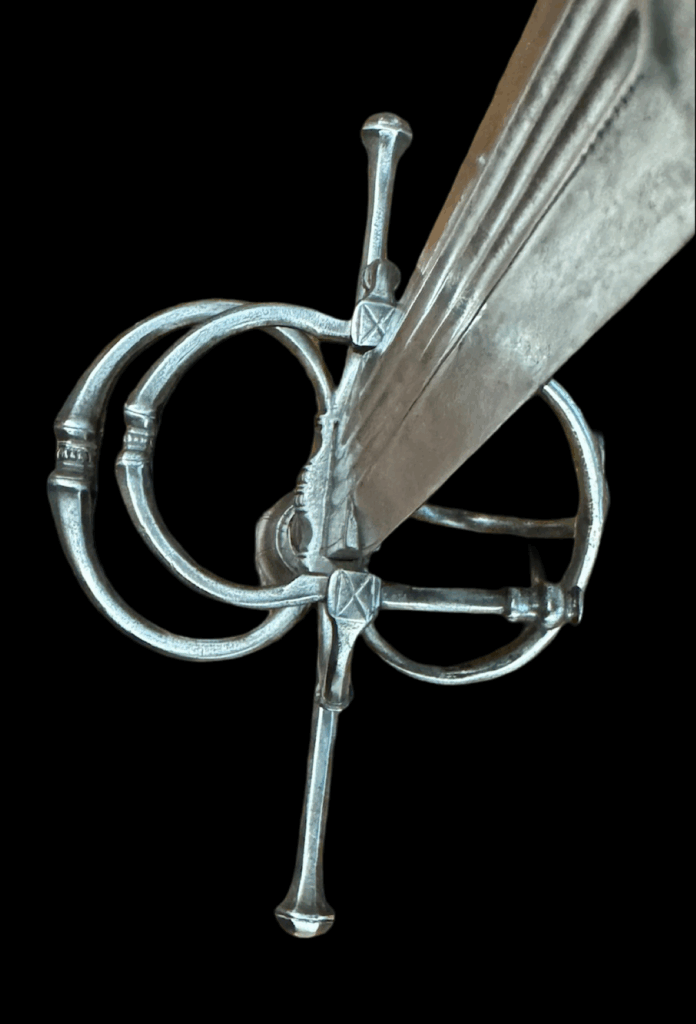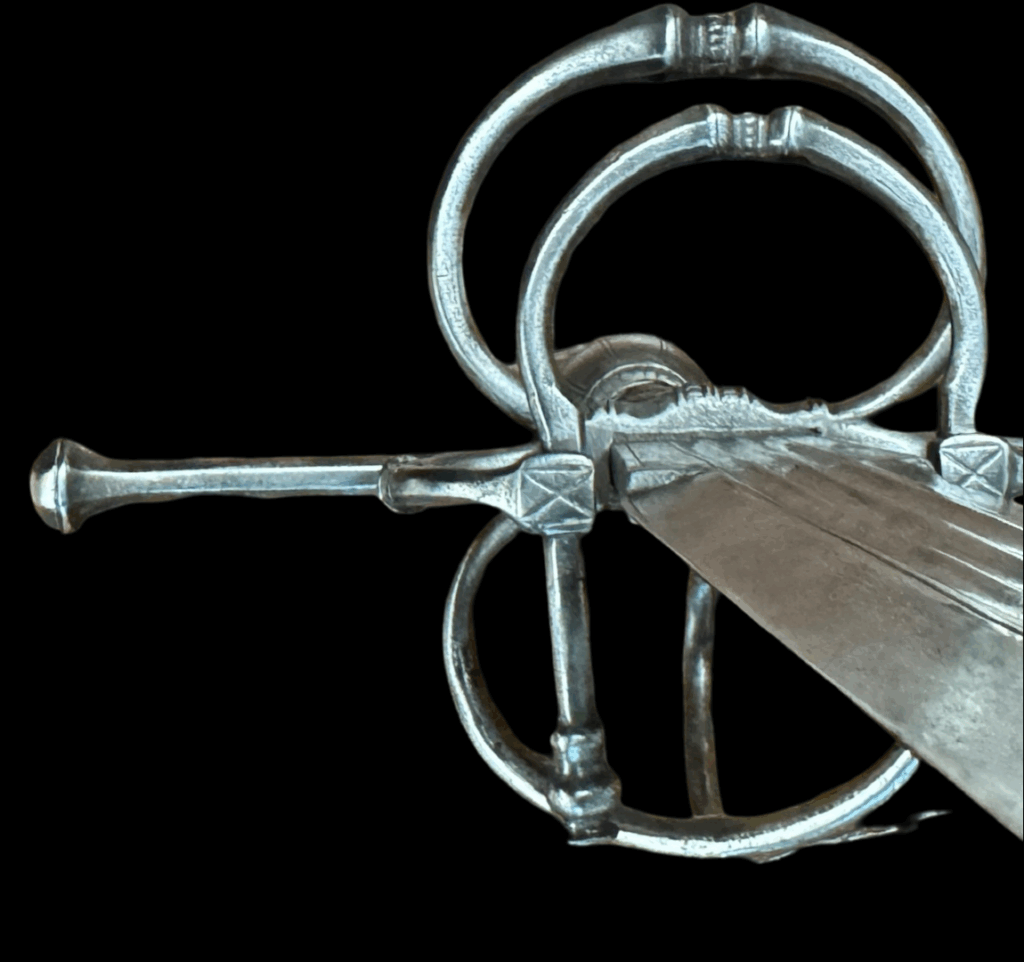1797) SUPERB NOBLEMAN’S QUALITY BASTARD SWORD CIRCA 1560: This bastard sword was made for an exceptionally wealthy person or noble who could afford the absolute best.This sword would make a great addition to any museum or world-class collection looking for the exceptional.This sword has the best blade of any bastard sword I have had in 40 years, and the construction on the hilt is just as good.
Description: Under the Norman typology, this is a Hilt 43 (used from 1550 to 1630), with a style 16 Hens Egg Pommel (used from 1470 to 1580) with eight double etched lines that line up perfectly with the finial extended button. Original wire grips (or at worst working life) with Turks Heads, swelling octogonal tips at the end of the round quillons, double ring guard expanding at the center and chiseled at the center, stiff diamond-shaped blade about 75% the length of the blade with a pronounced medial ridge, triple small fullers about a fourth the length of the blade at the forte, fullers extending into a tapering rectangular ricasso to the quillon block, finger guards at each side of the blade.
Length: Approximately 46.5 inches.
Condition: Superb with only slight pitting.
Comparables: There are numerous examples of the Norman 43 in museums throughout the world, including:
-Schloss Ambras
-A near identical example in the Wallace collection A-481 plate 109.
-Five examples of this sword typology can be found in Filippo Urso’s designs, dated 1554 and preserved in the Victoria and Albert Museum (# CVIIII CX, DV, EIII, and EVI).
1) For the same reason, full metal defensive armor and two-handed swords did not develop until the same period. As furnaces got bigger in medieval Europe, billets of steel (a solid length of steel) accordingly increased in size. With bigger billets, swords could now be made with fewer (but larger) billets of steel. Eventually reaching the apex of one billet per sword. Larger furnaces generally meant higher temperatures, better steel, faster production, and probably less expensive to manufacture on a large-scale basis.

